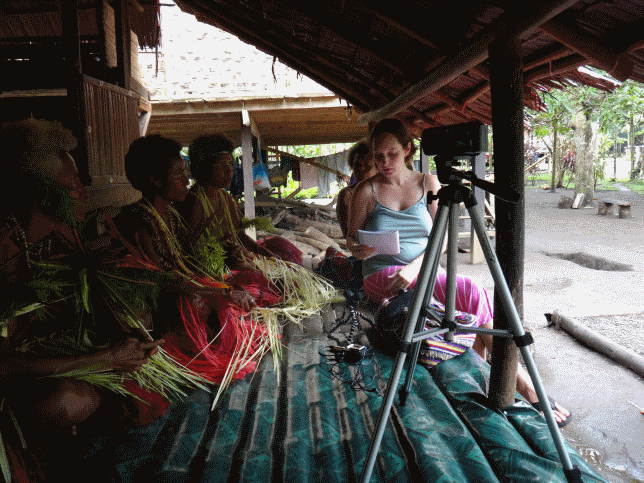Speaking, Talking, Telling
Spoken Language and Text Corpora
Matukar Panau

Matukar Panau is an Oceanic language spoken near Madang in Madang Province, Papua New Guinea. Since 2010, the language is being documented in an ongoing project lead by Danielle Barth and community members. Linguistic work can be found under resources.
Matukar Panau is a highly endangered Oceanic language spoken around 45 km north of Madang, Papua New Guinea. Matukar is a village with around 500 people and Surumarang is a smaller hamlet with around 200 people. Of these 700 people, most (540) are under 30 years old and are unlikely to speak more than very basic Matukar Panau. Their first and dominant language is the English-based creole Tok Pisin. Another 130 or so people are between 30 and 50 years old. Their first language is Matukar Panau, but many speaking instead primarily Tok Pisin. The dominant language for most of these people is certainly Tok Pisin, but they can and will still use Matukar Panau, and will often do code-switching with Tok Pisin. Around 25 people are over the age of 50, and while these speakers are also Tok Pisin speakers, they still speak Matukar Panau often and well. Although the youngest adults and children speak primarily Tok Pisin although there is still societal value in conducting small social rituals in Matukar Panau as opposed to Tok Pisin. For instance, greetings are often done in Matukar Panau such as good morning (tidom mami uyan), good day (sabi uyan), good afternoon (raurau uyan) or good night (tidom uyan), how are you doing? (uyan madonggo [sitting good] or uyan turago [standing good] or mateng ti, abab ti [no sickness, no wounds]?). Someone who primarily speaks Tok Pisin, may still ask in Matukar Panau if someone has betel nut (mariu), lime (kau), mustard (ful) or cigarettes (kas).The person asked is expected to give one or two small items to the asker.
Stories
Bruce Kainor: Kaluk Niu do Mariu
Bruce Kainor telling the story of the Betel Nut. (Tralated into Tok Pisin)
John Bogg: Family and Life Story
John Bogg is telling the story of his family and his life (Translated into Tok Pisin)
Kadagoi Lovinea Rapalau and Kadagoi Rawad Forepiso: Stori and Singsing Kadagoi
Kadgoi Lovinea Rapalau and Kadagoi Rawad Forepiso tell a story which became a song